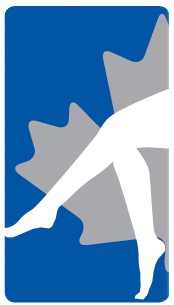FAQs
Varicose Veins:
Varicose veins are permanently dilated, thin-walled veins on the legs. They range in size from large, ropy veins to small, broken capillaries, commonly called spider veins and/or blue veins.
The most important cause is heredity. Other contributing factors are pregnancy, standing or sitting for prolonged periods, obesity, girdles.
Approximately 150-180 million people suffer from varicose veins in North America and Europe. There is a higher incidence in women than men. Up to 25% of all women between the age of 30-70 and up to 15% of all men in the same age group suffer.
If surgery is performed, the veins are tied or removed permanently. With sclerotherapy, the vein becomes scar tissue. However, both surgical removal and sclerotherapy is a control, not a cure, and will not prevent new varicose veins from forming. Therefore, follow up on a regular basis is important to maintain control of varicose veins, especially if you have family tendency to form them, or if you are on your feet most of the day.
• Wear support hose to slow the formation of new varicose veins
• Avoid Standing or sitting for prolonged periods of time or excessive weight gain/loss
• Avoid excessive time in a whir1p001’sauna.hot bath or becoming sunburned as heat will bring out
• Elevate the foot of your bed by 15cm (7 in) by either placing a rolled blanket at the foot of the bed to raise by 10cm
• Elevate your legs when you are resting during the day
Walking, stocking and elevation are your best defenses. They lower the pressure in all leg veins and prevent dilation.
Sclerotherapy:
Sclerotherapy is the destruction of varicose veins by the injection of a solution directly into the vein. This solution closes the vein; it irritates the inner vein wall, causing the vein wall to thicken and seal off. Gradually, the closed vein converts to scar tissue, which cannot be seen or felt.
Most patients can be treated with sclerotherapy alone. However, if either of the two main superficial veins, the long or short saphenous veins, is varicose, they are best treated surgically. Surgery is no longer as extensive as it was in the past because all remaining superficial veins can now be treated with sclerotherapy, and patients are usually sent home a few hours after surgery. About one month after surgery, you may begin injection treatments on the remaining superficial veins.
Because varicose veins are dilated, blood does not move through them efficiently. The body has already channeled blood into other healthy veins. Varicose veins are part of the superficial system of leg veins, which returns only 10% of the blood from the legs to the heart. The rest is handled by the deep system, which is not treated with sclerotherapy or surgical removal.
Stripping requires general anesthesia, whereas EVLT is done with local freezing only. It is a 50 minute in office procedure, that allows an immediate return to daily activities. After the stripping, you need approx. 2-4 weeks ( out of work ) recovery period. EVLT is proven to be safe, and non-scarring.
Compression Stockings:
Compression stockings will slow the process of developing more and worse varicose veins but will not eradicate them. In addition, regular wearing of elastic support stockings will relieve swelling, pain, soreness, cramps, improve calf muscle pump function and reduce progression of venous disease.
We suggest them for anyone suffering from venous congestion. They should definitely be worn whenever you have to stand for long periods of time.
Monday – Friday 9am -11am
Your referral must be faxed or emailed with the following demographics:
Your criteria:
Name | Address | OHIP Number | Date of Birth | Telephone Number
Your Doctor’s criteria:
Full Name | Medical Address | Telephone and Fax Number | Billing Number
